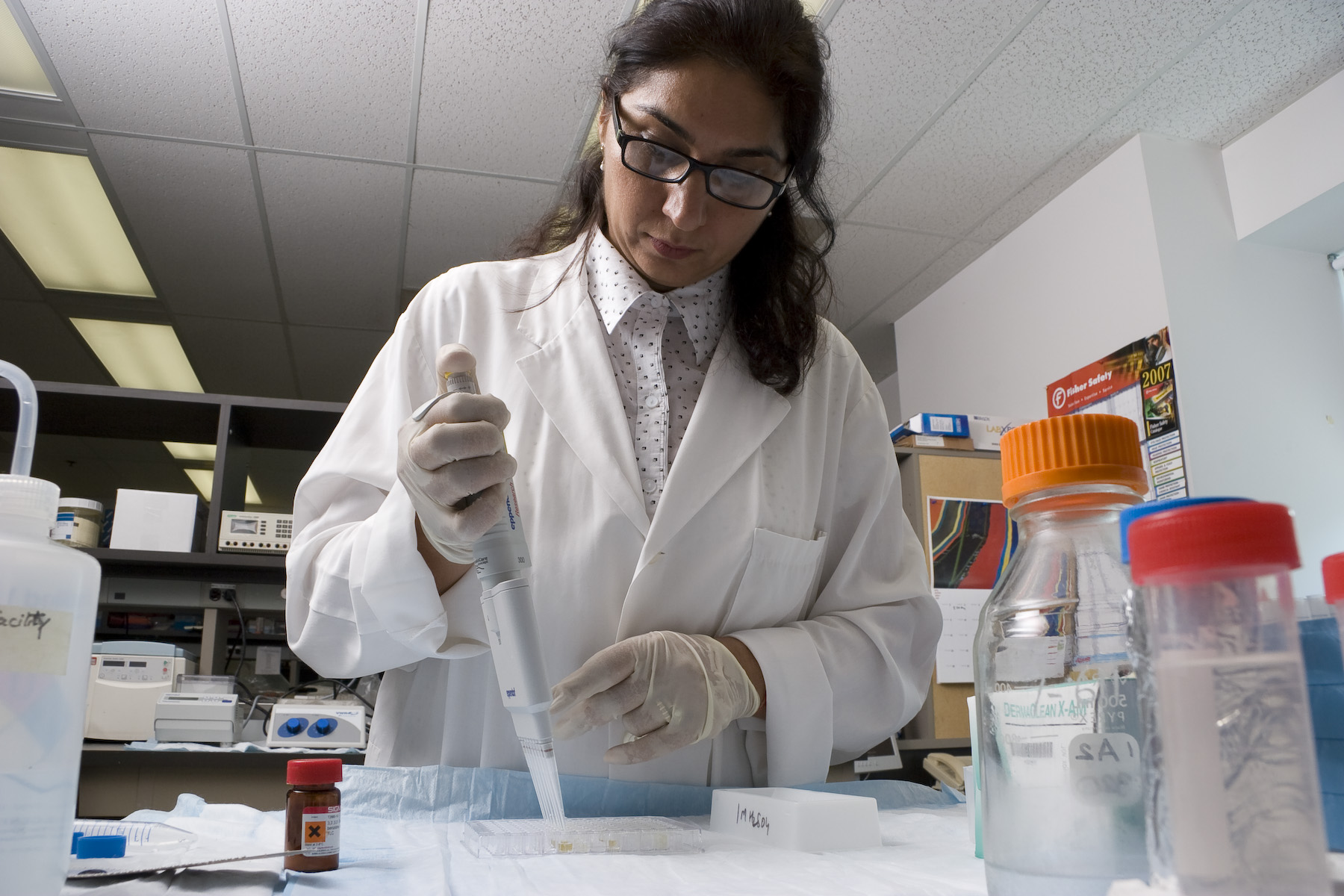A Step Ahead
By Alisa Kim
For medical researchers, one of life’s peculiarities is that while they and their staff work toward discoveries that may one day improve the health of others, they are exposed to potential harm through their work in the laboratory.
To the untrained user, a research lab can be a dangerous place. Fires, explosions, and toxic substances and emissions are some of the typical hazards. For the experienced lab user and those new to biomedical research, awareness of the risks, and knowing what to do in case of emergency, are keys to staying safe.
“Having worked in research labs for over six years now, most of the information seems common sense, but it’s important to take a moment to think about the potential hazards around us,” says Kelly Coultes, chair of the health and safety committee at Sunnybrook Research Institute (SRI) and a technician in the lab of SRI brain scientist Dr. Isabelle Aubert.
Coultes conducts regular lab safety seminars for summer students new to SRI, as well as lab staff who are required to update their training. At her last seminar, an informal poll conducted by Coultes revealed that the audience was comprised of high-school and university students, most of whom had never worked in a research lab.
The seminar includes an overview of the Workplace Hazardous Materials Information System (WHMIS), the Canadian system of identifying and classifying hazardous products. Training in WHMIS is mandatory for all Sunnybrook employees; the online tutorial is available on the SRI health and safety web site (see link below).
“You need to be aware of what you’re working with and how to work with it,” says Coultes of the flammable, corrosive and lethal chemicals used in lab experiments. Reviewing the lab’s material safety data sheets, ensuring that substances are labelled and stored correctly, and wearing protective gear such as a lab coat, gloves and eyewear, are vital to lab safety.
Other tips include: closing hoods to minimize ultraviolet light exposure; de-cluttering eye-wash stations; not wearing open-toed shoes in the lab; keeping food and drink out of the lab and removing protective attire when outside the lab to avoid contaminating common areas.
Proper disposal of wastes is also important. Needles and broken pipettes are to be placed in the designated sharps disposal bins; likewise, flammable, radioactive and anatomical materials are to be discarded in the appropriate receptacles.
Coultes also notes that all injuries are to be reported to the hospital’s occupational health and safety office. In the event of a fire, spill or other emergency, staff should call extension 65555 and evacuate the area. Moreover, labs should have a designated meeting place so that members can be accounted for in such instances.
“We’re all human and it is easy to let our guard down,” says Coultes, who inspects labs annually as part of her committee duties. “That is why it is important to pay closer attention to the dangers around us and know how to act in the event of an emergency, no matter how large or small the incident may be.”
For more information on research health and safety, visit healthandsafety.sri.utoronto.ca






